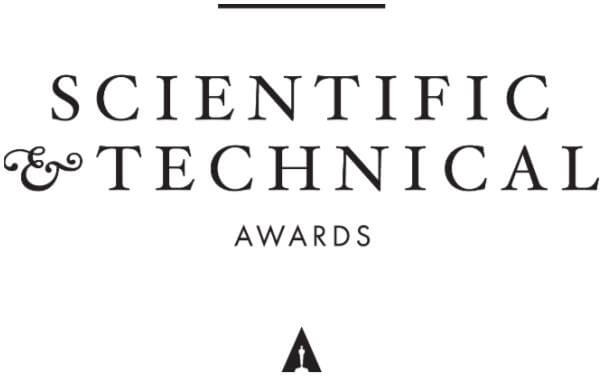Intel Embree Wins Academy Scientific and Technical Award

What’s New: Today, the Academy of Motion Picture Arts and Sciences awarded the Intel® Embree ray tracing library, a component of the Intel® oneAPI Rendering Toolkit, a Scientific and Technical Achievement Award. The Academy, who hosts the annual Academy Awards®, recognizes Intel Embree’s industry-leading ray tracing for geometric rendering as a contributing innovation in the moviemaking process.
“The Intel Embree team continues to push the envelope on rendering and ray tracing while delivering benefits to visual storytellers around the world. This award is a timely recognition for the passion and persistence of this team. We look forward to bringing more visual computing breakthroughs with our upcoming XPU platforms with Xe architecture.”
–Raja Koduri, Intel senior vice president, chief architect and general manager of Architecture, Graphics and Software
About Intel Embree: Ray tracing methods combine the physics of light with 3D objects and their surface materials to generate lifelike images, including mathematically correct reflections, refraction, shadows and more. Rendering developers, graphics application engineers and content creators use Intel Embree to deliver high-performance, high-fidelity visual experiences.
intel embree logo 56625203Intel Embree’s production-ready capabilities allow creators to inject photorealism through premier, realistic lighting effects, such as reflections and shadows on hair, fur, mirrors or any object; complex motion blur for multiple moving objects like vehicles, propellers and birds; and complex geometries like ray-oriented disks, spheres and normal-oriented disks to render particle effects such as sand and foam. This is in addition to other features, such as multi-level instancing to render complex scenes.
Why It Matters: Intel Embree helps developers optimize rendering applications on existing hardware to utilize advanced technologies such as Intel® SIMD and Intel® AVX-512 on Intel® Xeon® and Core™ processors and emerging Intel® XPU platforms, such as Intel Xe architecture (GPUs). Customers achieve real-time performance, fast render cycles, cost-efficient production and memory savings — more time spent on quality rendering and less time on compute.
“We are humbled and honored to receive this award. It is a wonderful acknowledgement of our efforts to deliver open software technology, cleverly utilizing ever-improving computing platforms, to unbridle creativity taking motion pictures and animation to amazing levels of visual impact in storytelling,” said Jim Jeffers, senior principal engineer and senior director of Advanced Rendering and Visualization Architecture at Intel. “Intel Embree is the culmination of many years of research, industry collaboration and software development — playing a pivotal role in greatly enhancing visual experiences with photo-realistic content.”
How Customers Use Intel Embree and oneAPI Rendering Toolkit: Intel Embree is widely used in movie studio rendering pipelines. Its ray tracing capabilities include studio photorealistic visual effects, animated films, scientific visualization, 3D product and architectural design, and gaming visuals such as terrain and shadows. The open source library is also integrated into many popular industry rendering tools, such as Blender, Chaos Group’s V-Ray, DreamWorks Animation’s MoonRay, Kitware’s ParaView, Corona Render, Maxon Cinema 4D and Cinebench, and others.
Movies where Intel Embree was used to deliver stunning visuals include:
- “Bumblebee” — Allspark Pictures, Di Bonaventura Pictures, Tencent Pictures Platinum Dunes, Paramount Pictures, using Chaos Group V-Ray
- “Cyberpunk 2077” — Goodbye Kansas Studios using Chaos Group V-Ray
- “How to Train Your Dragon: The Hidden World” — DreamWorks Animation using MoonRay
- “Lego Batman” — Animal Logic using Glimpse
- “Manou the Swift” — Luxx Studios using Chaos Group V-Ray
- “Next Gen” — Baozou in association With Tangent Studios using Blender; Media courtesy of NETFLIX Inc.
- “Peter Rabbit” — Animal Logic using Glimpse
- “Secret Life of Pets 2” — Illumination Entertainment using the Illumination Mac Guff renderer
- “Spider-Man, Far from Home” — Sony Pictures using Framestore Freak
- “Spring” — Blender Animation using Blender
- Thanos from “Avengers: Infinity War” — Marvel Studios, Digital Domain, using Chaos Group V-Ray
- “The Grinch” — Illumination Entertainment using the Illumination Mac Guff renderer
- “Trolls” — DreamWorks Animation using MoonRay
About the Award: The Scientific and Technical Awards were introduced in 1931 to recognize the achievements of pioneers and science and technology’s critical role in advancing motion picture production. The Academy will honor 17 scientific and technical achievements in a virtual Scientific and Technical Awards presentation on Saturday, Feb. 13, 2021; the ceremony will be available on the Oscars® website at 1 p.m. Pacific Standard Time.
What’s Next: The open source Intel oneAPI Rendering Toolkit enables high-fidelity visual expression and will expand from professional studios to individual home content creators and small businesses. Download the Rendering Toolkit or use in the Intel® DevCloud for free.
Source: Intel

熱門頭條新聞
- In conversation with ‘Ultraman Rising’ director Shannon Tindle: Insights on storytelling, innovation, and collaboration in animation
- Breaking Free: Disney Declares Independence from the Apple App Store
- Warner Bros Discovery confirms Max launch in seven Asian markets
- A look at the winners of the 72nd San Sebastian International Film Festival
- Talpa Studios and Hasbro Entertainment showcased Trivial Pursuit at MIPCOM 2024
- NARAKA: BLADEPOINT Invites You to Dance with the Spirits
- Curve Games Signs Publishing Agreement with Patattie Games for Upcoming Title Wax Heads
- DUBAI STUDIOS SIGNS PARTNERSHIP WITH INTERNATIONAL ACADEMY OF TELEVISION ARTS & SCIENCES
